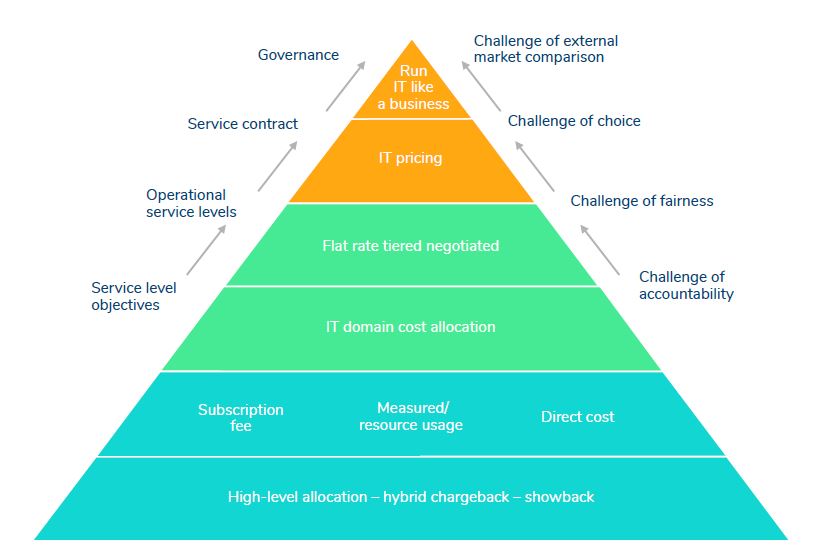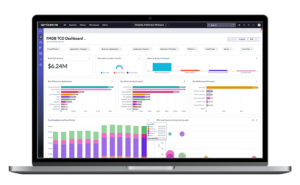One of the most intimidating aspects of building a cost model is choosing your design and allocation methodology. The ideal approach will vary based on both your objectives and the unique traits of your organization, and the right path isn’t always clear. So how do you decide the model design and allocation methodology that’s right for you? Well, the technical details of each possible option are beyond the scope of this post. However, we can still help you get started with a high-level explanation of standard cost model design and allocation methodology, as well as frequently asked questions and common roadblocks you may encounter along the way.
General Methodologies: Double Step-Down and Layered/Tiered
There are two cost modeling methodologies relevant to IT finance, the double step-down model and the layered/tiered model. We won’t do a full breakdown of each, but here’s an abbreviated explanation to guide you:
- Double step-down models are used almost exclusively by public sector IT organizations. This is because Federal regulation demands unique allocation strategies and reports for appropriation tracking and government chargeback.
- Layered/tiered models tend to offer more speed and functionality over double step-down models. Outside of government, they’re typically the best choice.
That said, this post is written from a layered/tiered methodology perspective.
Initial Layers: Mapping the Cost Centers and Accounts View to a Services View
The first two layers of every cost model are: 1) a cost center or account view from budgets, actuals, or forecasts, which then get mapped to, 2) a defined services view (e.g. compute, servers, storage, AD, desktops, laptops, etc.). This initial layer is the foundation for everything else the model will do.
To create these initial layers, and the allocation steps between them, you’ll need to:
- Establish a catalog of IT services you wish to cost with your model.
- Look at each service and take thorough inventory of all cost centers required to deliver it.
- Verify every service with finance to be sure its costs can be measured (or reasonably allocated).
- Ensure all services are defined to allow for consumption tracking by IT.
Essentially, these first two layers are all about establishing a service catalog and defining your services.
This is a crucial step, but don’t worry if you’re still unsure how to approach it. We provide in-depth guidance on service definition and rate setting in our free eBook, A Practitioner’s Guide to Cost Modeling, which you can download here.
“How many other layers and tiers should my model have?”
Your model’s overall structure – the number of layers and tiers it includes – depends both on your goals and the data you have available. More detail in your service costing strategy will naturally require a greater degree of granularity in the model (additional layers and tiers), as well a higher quantity and quality of data.
But don’t be afraid to start small. It’s perfectly fine to build your model from a high level and add layers and tiers as it matures – especially since you can iterate the model to improve data and fill in gaps as you go.
Allocation Strategies and How They Impact Your Model
The structure of your model is also reliant on the allocation strategy you want to use.
As your allocation strategy increases in detail – to achieve greater accuracy in costing, rate setting, and billing – your model will require more layers, tiers, and data to be effective.
Of course, everyone wants maximum detail and accuracy in allocations to “run IT like a business.” But you can’t run before you learn to walk.
Below is a visual representation showing how allocation methodologies mature in detail and specificity – illustrating the challenges and benefits along the way:

Diving Deeper into Cost Model Design and MethodologyFor a deeper look at the best practices behind building and managing cost models – as well as the steps you should take before and after implementation – download our eBook, A Practitioner’s Guide to Cost Modeling, right here.
For a deeper look at the best practices behind building and managing cost models – as well as the steps you should take before and after implementation – download our eBook, A Practitioner’s Guide to Cost Modeling, right here.





